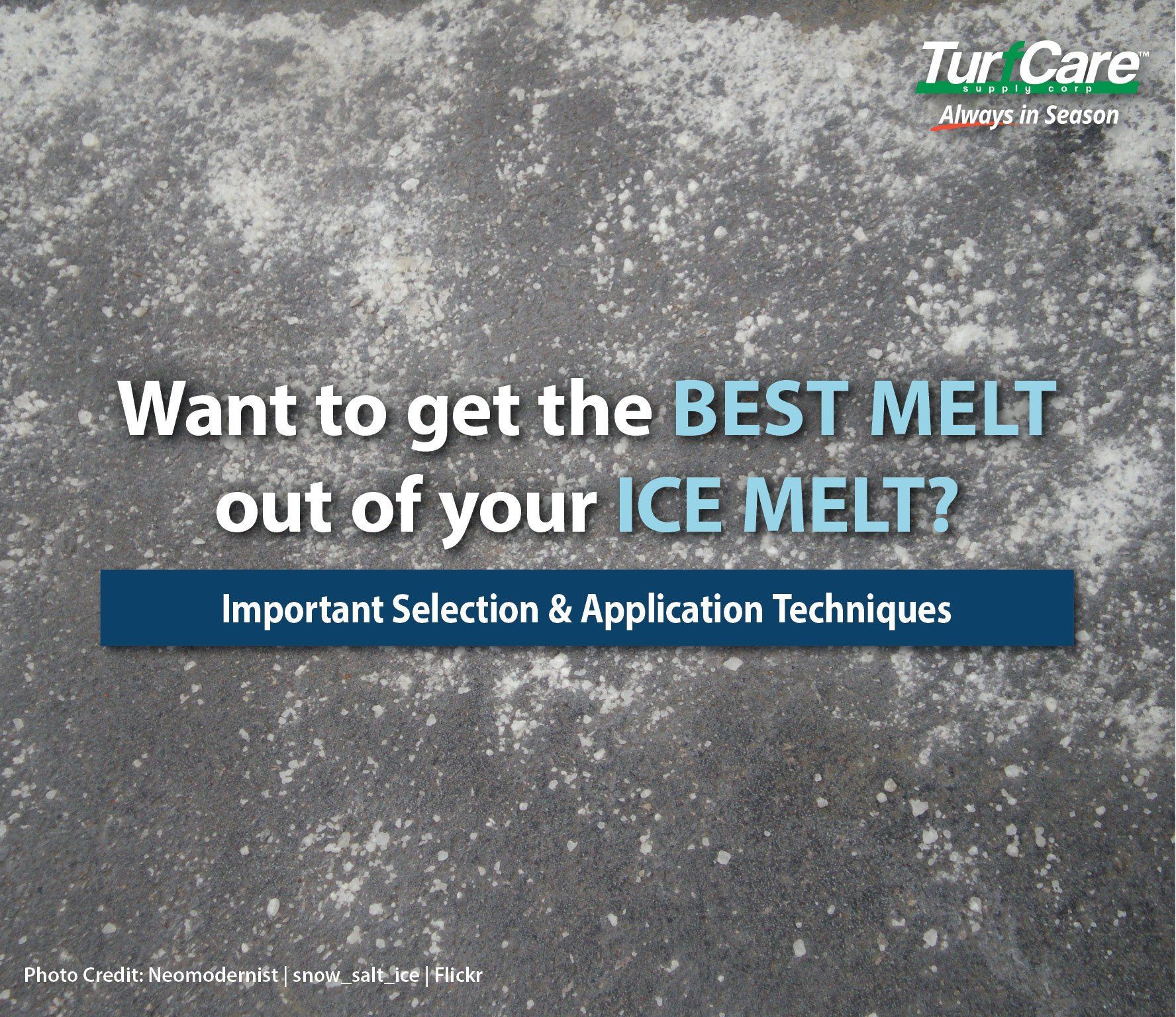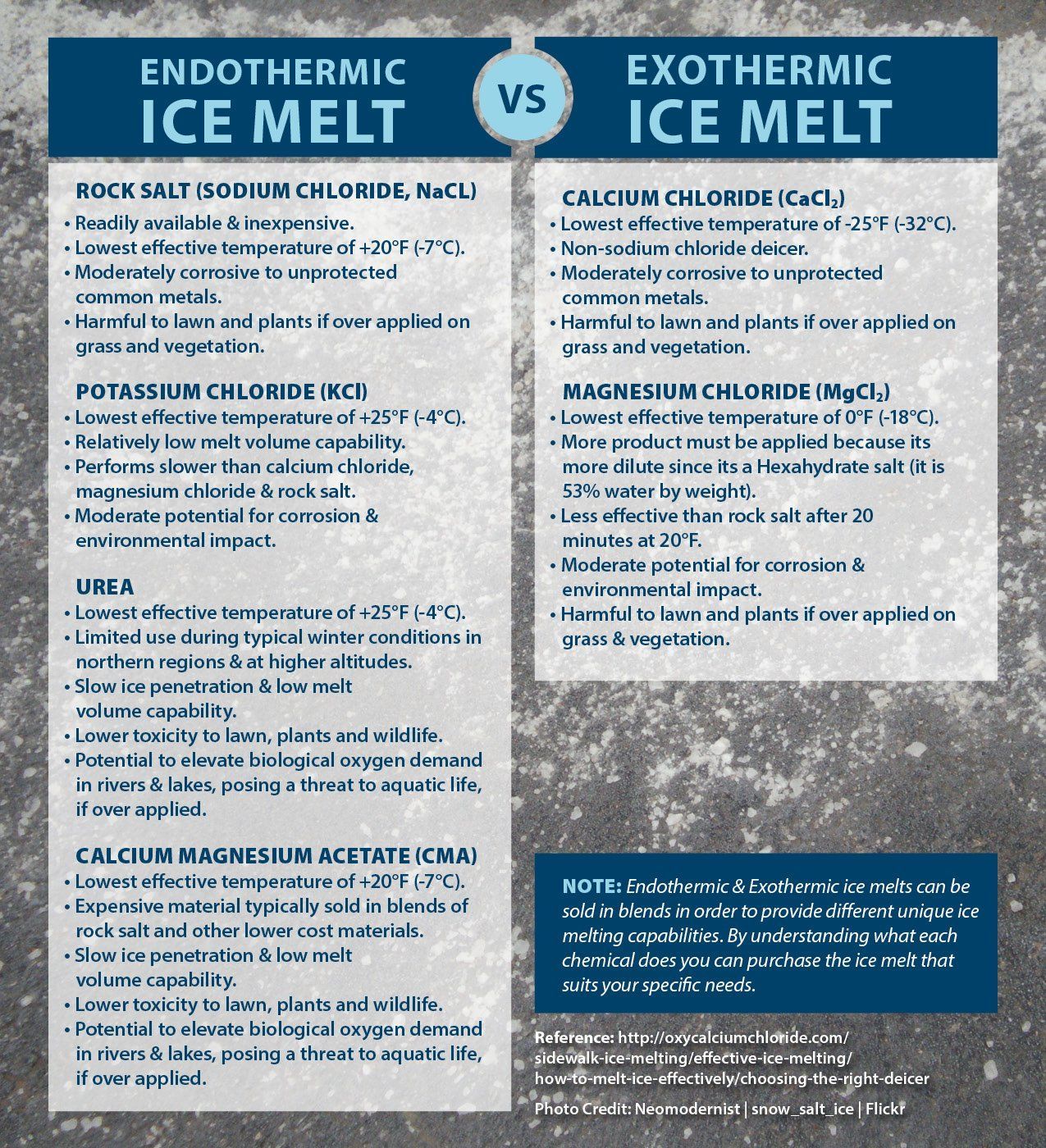Want to get the BEST MELT out of your ICE MELT?


- NOTE: Once you determine what type of ice melt to use, consider colorant (dye added to help with even coverage), safe-for-use qualities and environmental impact. All these are determined by you and what your preferences are. Refer to label on your product to determine these qualifications.
2. DON’T WAIT UNTIL THE LAST MINUTE
This includes both purchasing and applying your ice melt product. Winter is approaching so instead of waiting until the first snow to purchase ice melt, try making arrangements to have ice melt on hand prior to a storm. If there is an expected storm coming, treat a surface (driveway, sidewalk, outdoor steps, parking lot etc.) ahead of time. A pre-application will prevent snow/ice to bond and build-up on a surface which will ultimately result in less product use in the long run.
- TIP: Apply ice melt before, during and at the end of storm for maximum deicing results.
3. DISPERSE PROPERLY
It is possible to have too much of a good thing with ice melt. Applying large amounts of ice melt at once will not affect the speed of snow and ice melting. Also, too much product can result in damaged surfaces, harm to the environment and unnecessarily increased product use and cost. For efficient and accurate coverage results, a mechanical spreader is recommended; the proper coverage is about one cup per square foot. Product will fan out and undercut the ice, making it easier to remove.
4. STORE PROPERLY
In between storms, be sure to store product in a tightly sealed container to protect it from air, sunlight and moisture. Certain chemicals in ice melt products (Magnesium Chloride and Calcium Chloride) will draw moisture out of the air resulting in a clumpy, hard and degraded product. Left over product at the end of the winter season can be stored in the same container it’s been stored it in all season, but wrap the bag in a dark wrap to prevent any extra light from reaching the product.
- NOTE: Be sure to always store out of reach of children.
For professional fertilizers, humic and AMP-XC™ enriched products available, please visit TurfCare’s online Product Catalog.
For green industry professionals or others interested in ordering Turfcare products, please contact our Customer Service to find a distributor near you.
The TURFReport Highlights:
Additional Articles and Insights
















